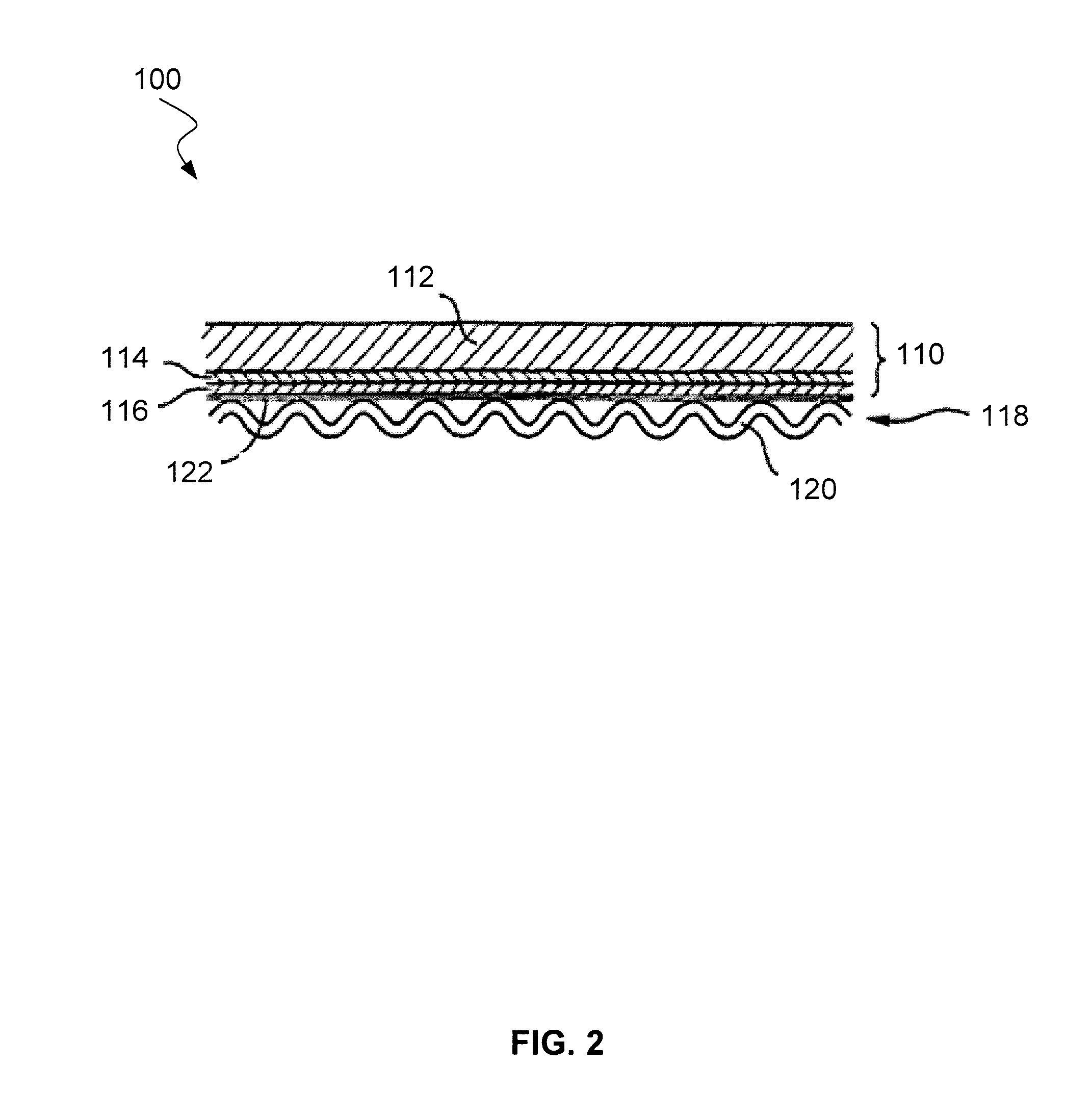Systems and methods for preventing chromium contamination of solid oxide fuel cells
a solid oxide fuel cell and chromium contamination technology, applied in the direction of cell components, other chemical processes, separation processes, etc., can solve the problems of electrochemical cathode performance degradation, fuel cell performance degradation, etc., and achieve the effect of reducing chromium contamination and reducing chromium contamination
- Summary
- Abstract
- Description
- Claims
- Application Information
AI Technical Summary
Benefits of technology
Problems solved by technology
Method used
Image
Examples
example 1
[0035]Several oxide powders (manganese, zinc, cobalt, copper, tin, and nickel oxides) were tested in a tube furnace for their ability in capturing chromium. Chromium oxide powder was placed in a crucible with a piece of porous stainless steel on top. The oxide powders were placed on top of the porous stainless steel. The tests were performed at 750° C. for 1000 hours in flowing air with 10% humidity. After testing, the oxide powders were weighed to determine mass changes and energy dispersive x-ray spectroscopy (EDX) analysis was done to see if any chromium species were absorbed on the powders. However, no chromium was detected in the tested powders.
example 2
[0036]Several oxide powders (lanthanum, copper, manganese, tin, zinc, and cobalt oxides) were tested in a tube furnace for their ability to capture chromium. Chromium pieces, not chromium oxide powder, were placed in a crucible with a piece of porous stainless steel on top. The oxide powders were placed on top of the porous stainless steel. The tests were performed at 750° C. for 1000 hours in flowing air with 10% humidity. After testing, the oxide powders were weighed to determine mass changes and EDX analysis was done to see if any chromium species were absorbed on the powders. Only the lanthanum oxide sample showed chromium species on the surface in this example. Areas of the sample with chromium were yellowish color and contained up to 20 to 25 atomic percent of chromium compared with lanthanum. This example shows that while lanthanum oxide may be a chromium-getter material, not all inorganic oxides can be used as chromium-getter materials.
example 3
[0037]Several powders were tested in a tube furnace for their ability to capture chromium. These powders included barium carbonate, strontium carbonate, calcium carbonate, 20 mol % gadolinia doped ceria, neodymium oxide, and magnesium oxide. Chromium pieces, not chromium oxide powder, were placed in a crucible with a piece of porous stainless steel on top. The powders were placed on top of the porous stainless steel. The tests were performed at 750° C. for 1000 hours in flowing air with 10% humidity. After testing, the powders were weighed to determine mass changes and EDX analysis was done to see if any chromium species were absorbed on the powders. Barium carbonate and calcium carbonate showed the best ability to capture chromium in this example. The 20 mol % gadolinia doped ceria and magnesium oxide did not capture any chromium species. Neodymium oxide changed color on the surface (indicating chromium capture) but EDX analysis could not be performed because of low conductivity ev...
PUM
| Property | Measurement | Unit |
|---|---|---|
| temperature | aaaaa | aaaaa |
| temperature | aaaaa | aaaaa |
| temperature | aaaaa | aaaaa |
Abstract
Description
Claims
Application Information
 Login to View More
Login to View More - R&D
- Intellectual Property
- Life Sciences
- Materials
- Tech Scout
- Unparalleled Data Quality
- Higher Quality Content
- 60% Fewer Hallucinations
Browse by: Latest US Patents, China's latest patents, Technical Efficacy Thesaurus, Application Domain, Technology Topic, Popular Technical Reports.
© 2025 PatSnap. All rights reserved.Legal|Privacy policy|Modern Slavery Act Transparency Statement|Sitemap|About US| Contact US: help@patsnap.com



